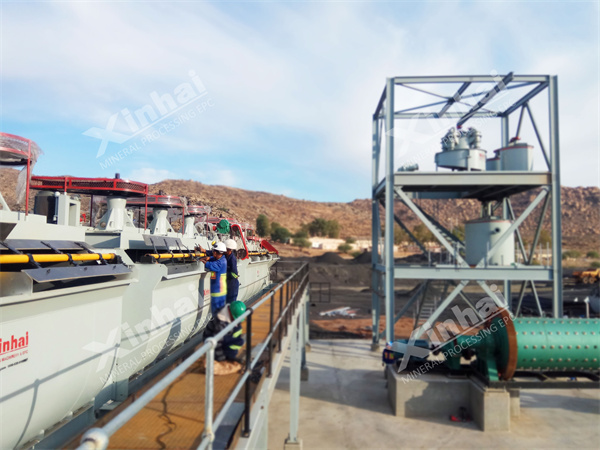Copper-nickel ore is mainly divided into two categories, namely sulfide copper-nickel ore and oxidized copper-nickel ore.
The composition of sulfide copper-nickel ore is mainly nickel pyrrhotite and chalcopyrite, often accompanied by pyrrhotite, cobalt pyrite, etc.; the composition of oxidized copper-nickel ore is mainly limonite and nickel silicate, and contains a high proportion of silicate minerals.
The mineral characteristics of copper-nickel ore determine the complexity of its mineral processing technology. The physical and chemical properties of the ore have an important influence on the mineral processing process and optimization, especially hardness, particle size, grindability, floatability, etc.
(1) Crushing and screening
The first step of copper-nickel ore dressing is crushing and screening, the purpose of which is to break the large pieces of ore mined into small pieces. The crushing process usually requires coarse crushing, medium crushing and fine crushing. The coarse crushing uses a jaw crusher, and the medium and fine crushing use a cone crusher.
The crushed material is screened by a screening machine, and the unqualified ore blocks with too large particle size are returned to the crusher for further crushing, and the qualified materials enter the grinding and classification operation.
(2) Grinding and classification
Grinding is to grind the ore to a fineness suitable for ore dressing, usually using a ball mill or rod mill. The control of grinding fineness is the key. Too coarse will result in the inability to fully dissociate the useful minerals, while too fine will increase the grinding cost and affect the ore dressing efficiency.
The function of classification is to separate the ore pulp after grinding according to the particle size. Commonly used equipment includes spiral classifiers and hydrocyclones. Through classification, the ore that is not fully ground can be returned to the grinding machine for further grinding, thereby ensuring the quality of the grinding product.

(3) Flotation process
The flotation process of copper-nickel ore usually includes three stages: roughing, concentrating and scavenging. Roughing is used to initially separate useful minerals, concentrating is used to improve the grade of concentrate, and scavenging is used to recover residual useful minerals in tailings. The selection of flotation equipment such as flotation machines and flotation columns will also affect the beneficiation effect. The optimization of flotation process requires reasonable adjustment of reagent system and process parameters according to the mineral composition and properties of the ore to improve the beneficiation index.
The execution effect of the beneficiation process directly affects the grade of the concentrate and the beneficiation recovery rate. In order to achieve better results, some methods can be used to optimize and improve the beneficiation process. The commonly used methods are as follows:
(1) Optimization of process parameters
The optimization of beneficiation process needs to start from multiple aspects. The adjustment of parameters such as grinding fineness, flotation reagent dosage, and pulp concentration has a direct impact on beneficiation indicators. Through experiments and production practice, better process parameters can be determined to improve beneficiation efficiency and reduce production costs.
(2) Equipment selection and configuration optimization
The selection and configuration of mineral processing equipment will also affect the mineral processing effect. Selecting the appropriate equipment model according to the properties of the ore and making reasonable configuration and layout can improve the operating efficiency and service life of the equipment. At the same time, with the development of science and technology, the application of automation and intelligent equipment has also provided new ideas for the optimization of mineral processing technology.
(3) Environmental protection and energy-saving measures
In modern mineral processing technology, environmental protection and energy saving are important development directions. The recycling and treatment of mineral processing wastewater can reduce pollution to the environment and reduce the consumption of water resources. In addition, the application and promotion of energy-saving equipment can also help reduce energy consumption in the mineral processing process and achieve green mineral processing.